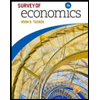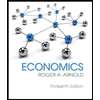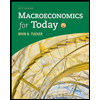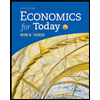How would each of the following affect the demand for money? Draw the curves for it a) a tax on bonds held by individuals b) a forecast by the Central bank that interest rate will rise sharply in the next quarter.
How would each of the following affect the demand for money? Draw the curves for it a) a tax on bonds held by individuals b) a forecast by the Central bank that interest rate will rise sharply in the next quarter.
Chapter20: Monetary Policy
Section: Chapter Questions
Problem 6SQ
Related questions
Question
How would each of the following affect the
a) a tax on bonds held by individuals
b) a
Expert Solution
This question has been solved!
Explore an expertly crafted, step-by-step solution for a thorough understanding of key concepts.
This is a popular solution!
Trending now
This is a popular solution!
Step by step
Solved in 2 steps with 2 images

Knowledge Booster
Learn more about
Need a deep-dive on the concept behind this application? Look no further. Learn more about this topic, economics and related others by exploring similar questions and additional content below.Recommended textbooks for you


Exploring Economics
Economics
ISBN:
9781544336329
Author:
Robert L. Sexton
Publisher:
SAGE Publications, Inc

Economics (MindTap Course List)
Economics
ISBN:
9781337617383
Author:
Roger A. Arnold
Publisher:
Cengage Learning


Exploring Economics
Economics
ISBN:
9781544336329
Author:
Robert L. Sexton
Publisher:
SAGE Publications, Inc

Economics (MindTap Course List)
Economics
ISBN:
9781337617383
Author:
Roger A. Arnold
Publisher:
Cengage Learning


